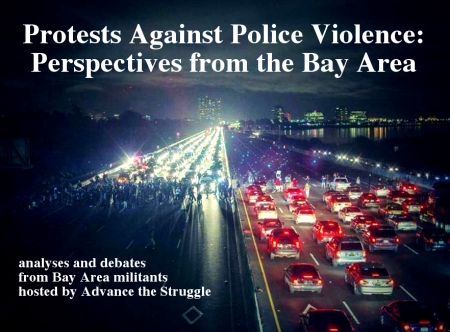It’s worthy to point out that our comrades in Unity and Struggle have published a serious review of Lars Lih’s book on Lenin’s What is to be done. This review argues the strengths and weaknesses of Lenin’s, What is to be Done.
The article by Unity and Struggle begins by explaining how Lenin emphasized the importance of revolutionary theory, as vital for any revolutionary movement. This was a clear position Lenin openly advocated. What is to be done is often attacked, claiming it advocated socialist professionals to substitute themselves as the professionals to lead workers into victory. This bourgeois-anarchist critique of What is to be done ignores how Lenin advocated the development of workers as agents of revolutionary theory as a basis for such a movement. Lenin states, the workers “participate not qua workers, but qua theoreticians of socialism…they participate only insofar as they succeed to a greater or lesser extent in attaining a command of the knowledge of their century and in advancing that knowledge.” For workers to accumulate revolutionary knowledge, so they can lead revolutionary struggle is not a hierarchical centered perspective, but one that actually fosters a horizontal spirit of struggle. But the development of such theoretically developed revolutionary workers also forms the content for forming a revolutionary organization. The foundation of such an organization, a necessary body to coordinate struggle and train militants, was explained through an analogy of bricklaying work.
Lenin states,
When bricklayers lay bricks in, various parts of an enormous, unprecedentedly large structure, is it “paper” work to use a line to help them find the correct place for the bricklaying; to indicate to them the ultimate goal of the common work; to enable them to use, not only every brick, but even every piece of brick which, cemented to the bricks laid before and after it, forms a finished, continuous line? And are we not now passing through precisely such a period in our Party life when we have bricks and bricklayers, but lack the guide line for all to see and follow?…If we had a crew of experienced bricklayers who had learned to work so well together that they could lay their bricks exactly as required without a guide line…But it is unfortunate that as yet we have no experienced bricklayers trained for teamwork, that bricks are often laid where they are not needed at all, that they are not laid according to the general line, but are so scattered that the enemy can shatter the structure as if it were made of sand and not of bricks.
This activity, the formation of revolutionary militants is what needs to be done today. The economist and those partisans of spontaneity abandoned the revolutionary political training of the workers, particularly the advanced workers. Today, we don’t even have the revolutionary organizational force to offer such training, even if we agreed that is work that should be done. The formation of a new revolutionary organization needs to be able to train workers in revolutionary organizing, by first theoretically training them in marxist theory, then carrying out political work that directly flows from such theory. The young anarchist protesters find such a proposal disgusting. Action is what is wanted. But in our recent period of “actions,” capital has been able to oppress workers and movements without any real resistance. Such action is laughed at by the American capitalist. This is why Unity and Struggle’s article concludes with, “Lenin believes, militants must become institutional bearers that reproduce a common approach based upon a common theory. As militants reproduce this common approach, following Lenin’s bricklaying analogy, the masonry line is no longer needed.” In short, the movement of a Leninist approach of forming revolutionary theory in political practice, is an egalitarian act far from being guilty of what the bourgeois-anarchist critique claim. It is the concentration of working class power, and necessary political project to seriously engage in the revolutionary transition of capitalism. A new generation must struggle, and engage Lenin’s works, that focus on building revolutionary organization, in order to have the basic perspective to build a revolutionary organization today for our historical moment.
 The following essay was written awhile ago and sat around waiting to be fixed up. It can be read as a follow up to notes on Lars Lih’s important book, Lenin Rediscovered: What Is To Be Done? in Context. Only recently the essay was finally fixed up enough to post here.
The following essay was written awhile ago and sat around waiting to be fixed up. It can be read as a follow up to notes on Lars Lih’s important book, Lenin Rediscovered: What Is To Be Done? in Context. Only recently the essay was finally fixed up enough to post here.
*******
It is important to deal with Lenin’s concept of organization in WITBD. The point is not to elevate WITBD into a set of principles that can be abstractly and universally applied. Like any work, WITBD is a product of history. As Lih noted in the beginning of his book such an approach has been an evident enough problem in the history of “Leninism”. However, despite Lih’s attempt to downplay the importance of WITBD in subsequent bolshevik thinking about organization, Lenin’s work—including WITBD—continues to be a necessary reference point for rethinking the role of revolutionary groups and organizations in our own day. By restoring the detailed context of Lenin’s concept of organization and reestablishing its connection to Kautsky, Lih provides the basis to learn from and critique Lenin and Leninism. In doing so he makes WITBD alive again—a renewed and important departure point for thinking about revolutionary groups and organization.
As Lih argues, the importance of WITBD was found in its generalization of already existing practices in the Russian underground, codifying and synthesizing those practices into a broad whole. The generalizing character of WITBD is what continues to make it so valuable today.
Continue reading





You must be logged in to post a comment.